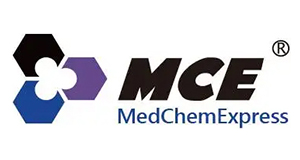Linalool,98% (stabilized with MEHQ), CAS 78-70-6
Linalool,98% (stabilized with MEHQ), CAS 78-70-6
SKU
MEXHY-N0368-10.1
Packaging Unit
10 mM/1 ml
Manufacturer
MedChemExpress
Availability:
loading...
Price is loading...
Product Description: Linalool is a natural monoterpene which is a competitive NMDA receptor antagonist. Linalool is orally active and crosses the blood-brain barrier. Linalool has anticancer, antibacterial, anti-inflammatory, neuroprotective, anxiolytic, antidepressant, anti-stress, cardioprotective, hepatoprotective, nephroprotective and pulmonary protective activities[1][2][3][4][5].
Applications: Cancer-programmed cell death
Formula: C10H18O
References: [1]Oner Z1, et al. The protective and therapeutic effects of linalool against doxorubicin-induced cardiotoxicity in Wistar albino rats. Hum Exp Toxicol. 2019 Apr 12:960327119842634./[2]Jun HJ, et al. Linalool is a PPARα ligand that reduces plasma TG levels and rewires the hepatic transcriptome and plasma metabolome. J Lipid Res. 2014 Jun;55(6):1098-110./[3]Jana S, et al. Antitumorigenic potential of linalool is accompanied by modulation of oxidative stress: an in vivo study in sarcoma-180 solid tumor model. Nutr Cancer. 2014;66(5):835-48. /[4]Rodenak-Kladniew B, et al. Anti-cancer mechanisms of linalool and 1,8-cineole in non-small cell lung cancer A549 cells. Heliyon. 2020 Dec 15;6(12):e05639. /[5]An Q, et al. Recent updates on bioactive properties of linalool. Food Funct. 2021 Nov 1;12(21):10370-10389.
CAS Number: 78-70-6
Molecular Weight: 154.253
Compound Purity: 99.11
Research Area: Cancer; Infection; Inflammation/Immunology; Neurological Disease; Cardiovascular Disease
Solubility: DMSO : 100 mg/mL (ultrasonic)
Target: Apoptosis;Bacterial;Endogenous Metabolite;iGluR;TNF Receptor
Applications: Cancer-programmed cell death
Formula: C10H18O
References: [1]Oner Z1, et al. The protective and therapeutic effects of linalool against doxorubicin-induced cardiotoxicity in Wistar albino rats. Hum Exp Toxicol. 2019 Apr 12:960327119842634./[2]Jun HJ, et al. Linalool is a PPARα ligand that reduces plasma TG levels and rewires the hepatic transcriptome and plasma metabolome. J Lipid Res. 2014 Jun;55(6):1098-110./[3]Jana S, et al. Antitumorigenic potential of linalool is accompanied by modulation of oxidative stress: an in vivo study in sarcoma-180 solid tumor model. Nutr Cancer. 2014;66(5):835-48. /[4]Rodenak-Kladniew B, et al. Anti-cancer mechanisms of linalool and 1,8-cineole in non-small cell lung cancer A549 cells. Heliyon. 2020 Dec 15;6(12):e05639. /[5]An Q, et al. Recent updates on bioactive properties of linalool. Food Funct. 2021 Nov 1;12(21):10370-10389.
CAS Number: 78-70-6
Molecular Weight: 154.253
Compound Purity: 99.11
Research Area: Cancer; Infection; Inflammation/Immunology; Neurological Disease; Cardiovascular Disease
Solubility: DMSO : 100 mg/mL (ultrasonic)
Target: Apoptosis;Bacterial;Endogenous Metabolite;iGluR;TNF Receptor

 Deutsch
Deutsch










